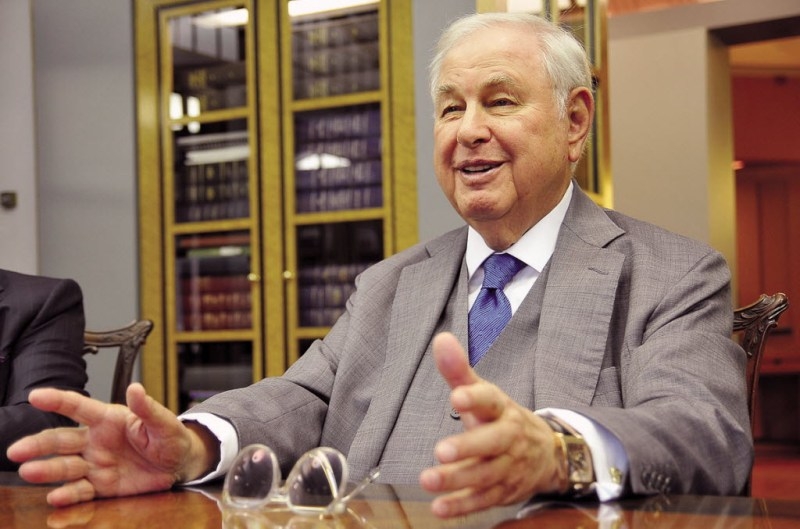
Taubman transformed Sotheby’s into an art powerhouse.
Photo via: Tribeca Disruptive Innovation Awards
The billionaire art collector, former Sotheby’s owner, and shopping-mall mogul A. Alfred Taubman died on Friday of a heart attack, the New York Times reports. He was 91.
According to Reuters, Taubman—whose personal net worth was estimated at $3.1 billion by Forbes magazine—made his fortune developing retail properties into upscale shopping malls.
Taubman Centers Inc, launched in 1950, expanded to cities such as Los Angeles and New York, and now operates approximately 3,000 stores.
In 1983 Taubman bought Sotheby’s for $124.8 million and transformed the then-struggling auction house into a fully-integrated art retailer. He lured consignors by guaranteeing minimums and attracted private collectors by sending out luxurious catalogues and offering innovative services such as credit, financing, insurance, and storage. (See Take a Look at A. Alfred Taubman’s Art Collection Through the Years.)
Sotheby’s prospered under Taubman’s leadership. By 1989 its sales grew to $2.9 billion, compared to Christie’s $2.1 billion. (See Sotheby’s Names Tad Smith as New CEO.)
However, in 2001 it emerged that Taubman and his counterpart at Christie’s, Anthony Tennant, were involved in a commission-fixing scandal between 1993 and 1996. According to prosecutors the illegal collusion between the auction houses cost customers over $100 million. (See Will Sotheby’s Again Fall Victim to Corporate Hubris With Dan Loeb, Tad Smith Takeover? and Sotheby’s New CEO Tad Smith Has $7M Pay Package—$1M More Than Ruprecht.)
Taubman was convicted and sentenced to nine and a half months in prison and fined $7.5 million. (See Top 13 Art World Jailbirds.) Sotheby’s pleaded guilty to price fixing and was ordered to pay a $45 million fine and paid out $256 million in a lawsuit brought against the company by clients.
Taubman personally settled $156 million of the civil costs and an additional $30 million of stockholders’ suit in order to avoid liability.
In 2005 Taubman finally sold his controlling interests in the auction house for $168 million and stock, ending his 22-year reign to focus on philanthropy.
He donated millions to the medical school of the University of Michigan and was involved in establishing and funding centers of learning at Harvard University and Brown University.
He remained deeply involved in the arts, serving as president of the Detroit Arts Commission (see What Does A. Alfred Taubman’s Death Mean for the Future of the Detroit Institute of Arts?).